-
Naviguesser for Burning Man 2025
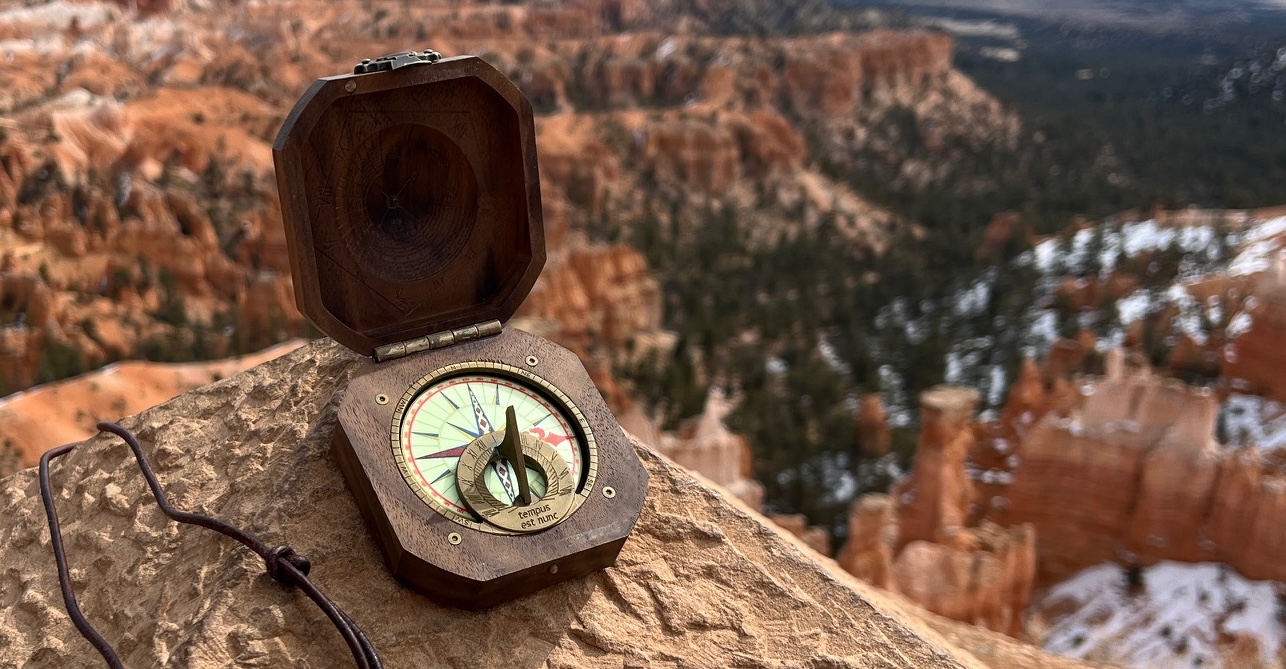
Naviguesser 2024: Noble wood, brass, and magic. Naviguesser 2025 is in the works
Naviguesser – an antique magical compass that always leads you to the closest great experience at Burning Man. It begins as a side-quest, given by a mysterious NPC you encounter on playa, and unfolds into an unforgettable adventure through Black Rock City — your most eventful day on the playa yet.
Imagine..
You’ve finally escaped your camp duties and wander into Black Rock City, ready to explore, participate, and embrace whatever the playa has to provide. You’re an adventurer, open to side-quests and unexpected encounters.
Climbing a piece of art or stumbling into a whimsical bar, you meet a strange NPC. They share a tale from another time and realm and, if you roll your charisma check well, hand you a mysterious artifact: a beautifully crafted antique object of wood and brass, with a sundial and a map of the city.
It resembles a compass, but it doesn’t point north.
The stranger calls it a Naviguesser. Every time you open your heart and trust the magic, it chooses a new path for you. Each destination is intentional, guided by the collective wisdom of thousands of burners.
You follow the arrow. And whenever you get to destination, it celebrates your arrival with a joyful dance. It leads you through incredible art, tea ceremonies, plush pony rides, massage workshops, performances, exotic meals, artisanal bars, and other unforgettable moments.
By day’s end, you complete your quest and loot a treasure chest. You return the artifact, but keep the memories and stories to tell.
Just another magical day at Burning Man.
The Vibe
The Naviguesser is meant to create a boutique experience. Somewhat similar to receiving a room key at Hotel Ashram Galactica for the day, or being treated to a multi-course meal at the Black Rock French Quarter. Only a few get to participate, but there is no VIP list, no privileged access, all it takes is luck, an open heart, and the willingness to participate.
History
The project idea came to us in 2022, when we had a tricycle-pirate ship, and thought that it would be cool to make a Jack Sparrow Compass that always points to them.
Since 2023 I’m bringing devices to the burn, improving and scaling bit-by-bit. I’m still working out a few technical kinks, but the feedback so far has been overwhelmingly positive.
There is a supporting service Burn Planner to select events, “fleet management” web application to manage map and schedule, custom electronics design, firmware with all the logic and special effects.
This year’s focus is upgrading the hardware and solving some design issues.
How It Works
The Naviguesser is a custom electronic device that uses GPS and stores event schedule to guide player to curated nearby experiences.
The schedule includes two types of events:
-
Collective Wisdom: Events submitted by camps for the WhatWhereWhen guide, upvoted by thousands of burners using Burn Planner. The selection is not random, excessive, or opinionated; each event made someone in the community excited.
-
Special Encounters: Some camps go a step further and craft moments of magic specifically for players using the device. These events receive higher priority.
Everything is stored locally—no phone, no internet required.
How to Participate
There are four ways to help create the magic:
1. Camps – Create special moments
The device is designed to give the player the best possible day on the playa—no time wasted, just maximum experience. Camps can elevate that even further. When someone arrives holding the Naviguesser, they’re on a magical journey. That’s your chance to blow their mind: offer a bit of extra warmth, a trinket, a story, an extra spin, or anything that fits your camp’s vision. Become part of the story they get to tell tomorrow.2. People – Join the cast as actors
The burner matures from player to NPC—from experiencing the magic to creating it. With this project, you get to step into a role of your own choosing. Dress as a character from another time or realm, invent your legend, and wander the city. You interact with random burners and get to choose who you gift this experience to. It’s like being a free-roaming actor at Disneyland, but with dust and heart. Cast members get a device for themselves on another day, and I’ll be making something special for everyone who joins.3. Wizards – Bring your skills and vision
I only have so many hands, and the project can go much further with your help. Join the project if you’re excited to help with graphic design, 3D modeling, story and promo, camp outreach, or engineering in any form (frontend, backend, mobile, microcontrollers—you name it). You’re welcome to shape the project with your ideas, as long as you’re ready to execute them.4. Angels – Support the magic
With new import tariffs and technical complexity, scaling this project to the desired scale is not feasible on my personal budget alone. I’m committed to run a small batch, but with your support, we can gift this experience to many more burners. Donations help cover more electronic units, outsource wood and brass work to individual craftsmen, upgrade and scale manufacturing capabilities, and literally buy more time to polish the idea.
Frequently asked questions
What if someone doesn’t return the device?
This comes up a lot. The short answer: most people return it. The rest is collateral—the risk of bringing art to the playa.The experience is designed to make it easy to return the device:
- It starts with a vibe check from the actor. A bit of personal connection and a small legend goes a long way in encouraging players to complete their journey.
- Each device has a tag with a return address: a base camp on playa and a contact outside of it.
- There is a treasure chest waiting for the player at the return point.
- When the battery starts running low—or the journey reaches 24 hours—the compass only points to base.
- We’ll try to place the return point at one of the friendly camps close to Esplanade.
- Once the battery is dead, the device becomes a trinket—a beautiful but dead artifact.
- After the event, we’ll run a social media campaign to recover some stragglers.
Since 2024, only one device is unaccounted for. The player reached out afterward yet didn’t manage to complete the return. The biggest challenge for players was the remote location of the base camp at 9:00 & I. Lesson learned—we’re looking for a better spot this year.
We’re making a bet that most burners are good people—especially when it’s easy to act with good will.
Can I purchase the device?
For many reasons, I’m not making them to sell.
Yet, I will be gifting naviguessers to major project supporters and co-authors. Actors are guaranteed to participate in the experience too.I want to help or have an idea, how to reach out?
- Instagram: @LightDutyMagic
- Telegram: @heavior
- LinkedIn: balashovevgeny
-
-
Failures, iterations and memories board

Visual history of my Jack Sparrow Compass in one place.
Includes fails, parts evolutions, some tools, and artifacts I picked up at Youtopias and Burning Man.
Most mounting hardware is made of 10 gauge copper wire that I also aged in ammonia.
-
Working Jack Sparrow Compass
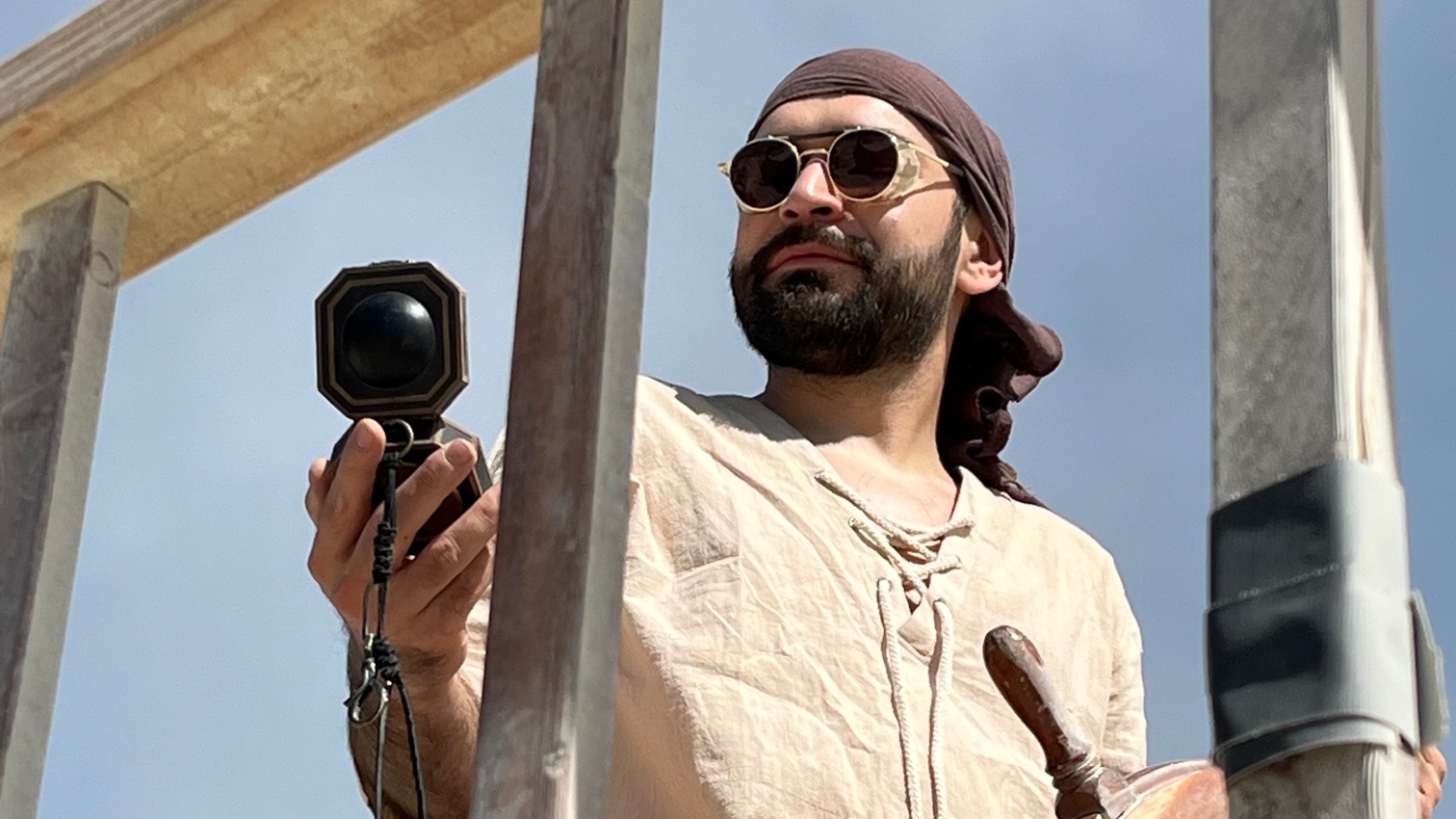
Burning Man 2023. Photographer: Eduard “No additional shot nor powder, a compass that doesn’t point north. And I half expected it to be made of wood.”
―James Norrington while examining Jack’s pistol, compass and sword
Pirates of the Caribbean wikiThis story started in 2022 on Burning Man. My friends turned their tricycle into a ship: with mast, sales, and everything. And as we were cruising around the idea came to mind: what if we make a compass that always points to The Man (the central art object of the event)? Like a compass that would always lead you home. Obviously, it was inspired by Jack’s compass the one from Pirates of the Caribbean.
Later as I was reflecting on the experience, the idea evolved: instead of pointing to one destination, it should always lead to the next adventure.
So I built it: a programmable compass that has a set of destinations in memory, and can lead the person on a quest between them. With added visual and mechanical effects, it creates a magical interactive experience. It’s like Jack Sparrow’s compass that actually works.
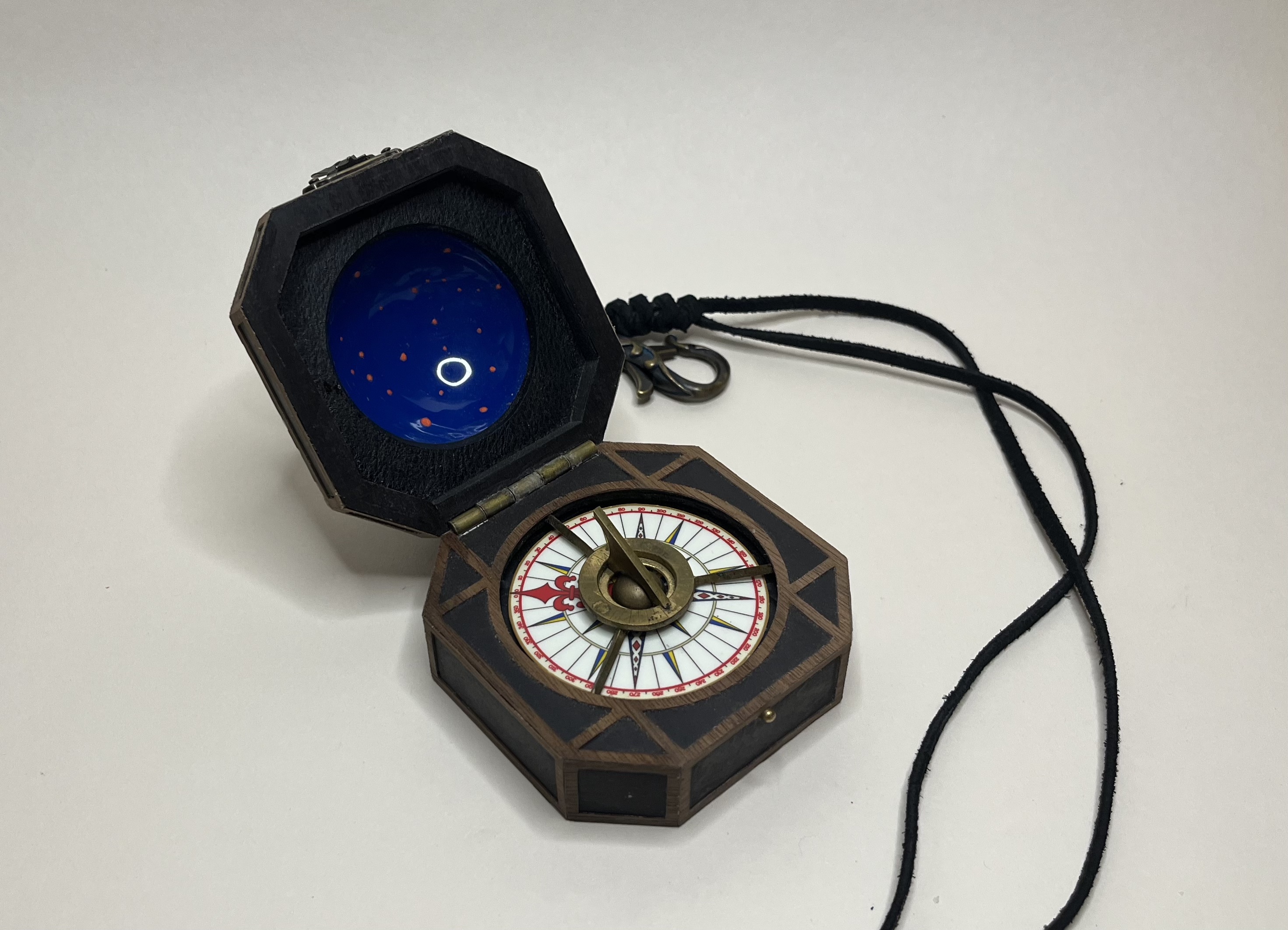
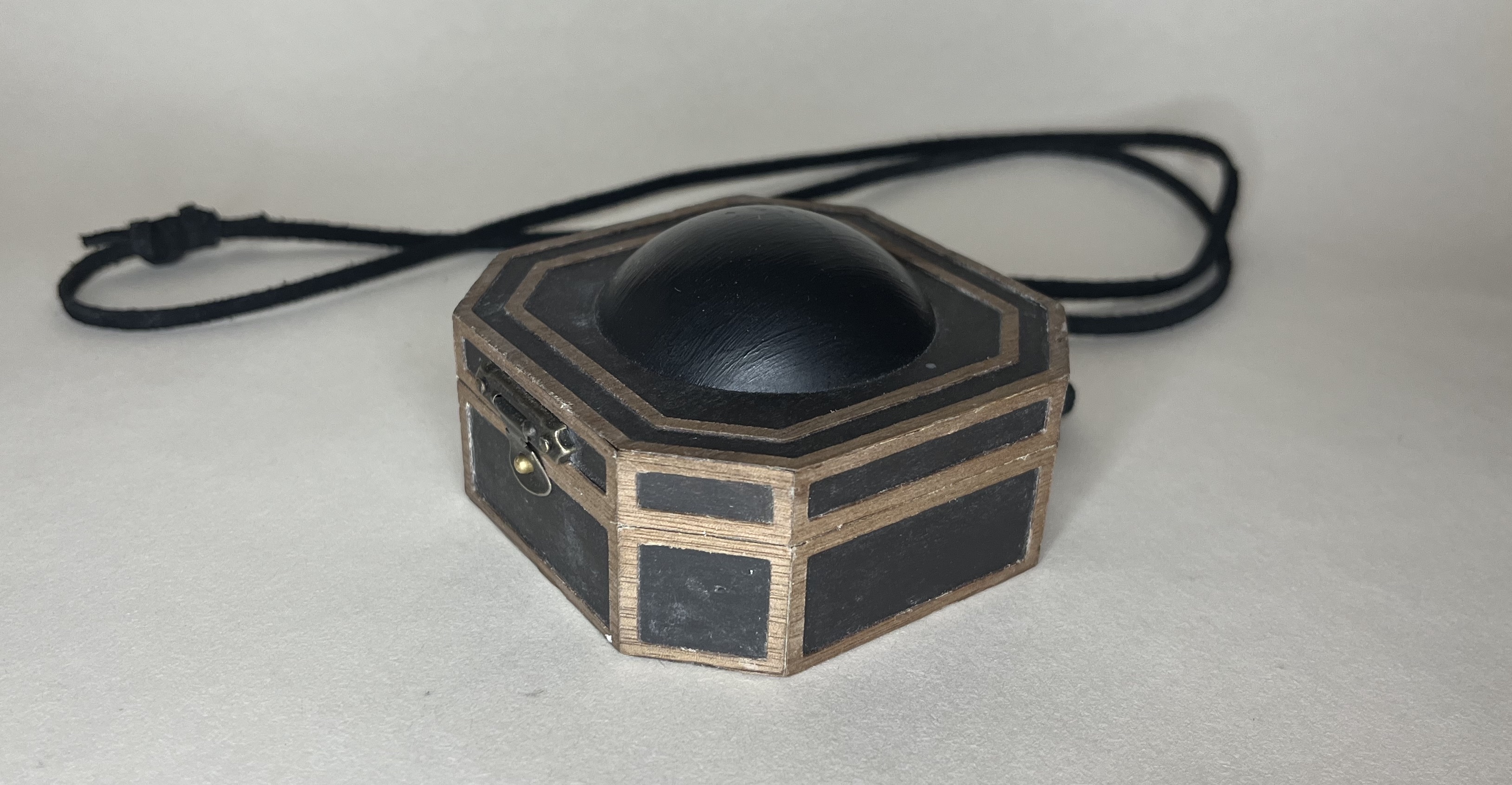
This page offers a breakdown of the features and build process. If you are interested in this project or have any questions, don’t hesitate to reach out to me through Instagram or LinkedIn
Features
Short demo of effects Components that make the magic:
- The compass is made mostly out of wood and brass, it sits well in the hand and has a lace to hang it around the neck or carabiner to affix it on the belt.
- Every visible brass piece is aged in ammonia to make it look ‘antique’ and consistent. No switches or charging slots are visible to keep the appearance.
- The dial is the main interactive element:
- When the compass is opened, it locates the next destination and turns the dial in that direction.
- When the player reaches the destination, it makes a ‘happy dance’ to indicate the achievement.
- When the compass is closed - the dial stops spinning and the compass goes silent.
- When the player is close to a destination, but hasn’t used the compass in a while - it will spin to create vibration and draw attention to it.
- It spins slowly when the destination is not yet calculated.
- More effects could be added. I tried making it beat some melody, but that part needs more work.
- The dial is glowing at night, but there are no lights visible. It adds to the magic of the experience and removes the need to have a flashlight handy. Compass charges the dial with UV light after sunset when the lid is closed.
- It supports Bluetooth for calibration and sharing diagnostic information. It is activated when the lid is tapped three times.
- Compass can keep the player entertained for 20+ hours thanks to a number of energy optimizations:
- Low-power IoT chip
- Bluetooth Low Energy protocol that is disabled after a minute of inactivity
- Power saving GPS mode
- UV light to charge the dial works only at night
- Spinning stops when the lid is closed
- Motor speed is limited to reduce the current
- When the battery is low, spinning gets even slower and UV lights are disabled
- Compass also has an accelerometer and gyroscope, but I haven’t come up with a good intuitive interaction for it. Could make it do something special when the player shakes it or turns it upside down. If you have some ideas, please share!
So, all that makes Compass a pretty good prop for interactive geo-location quests and long games.
The Box
When building the box, I tried to achieve a repeatable process. I created a parametric generator for the part templates and used a Cricut Mater machine to transfer the design into material. That allowed me to do iterations and fix mistakes as I was figuring out achievable dimensions and the process. Still, I’m not entirely happy with the automation: it still takes at least 3-4 days and 70+ parts to build a single item. The next iteration, if it happens, will rely on CNC milling.
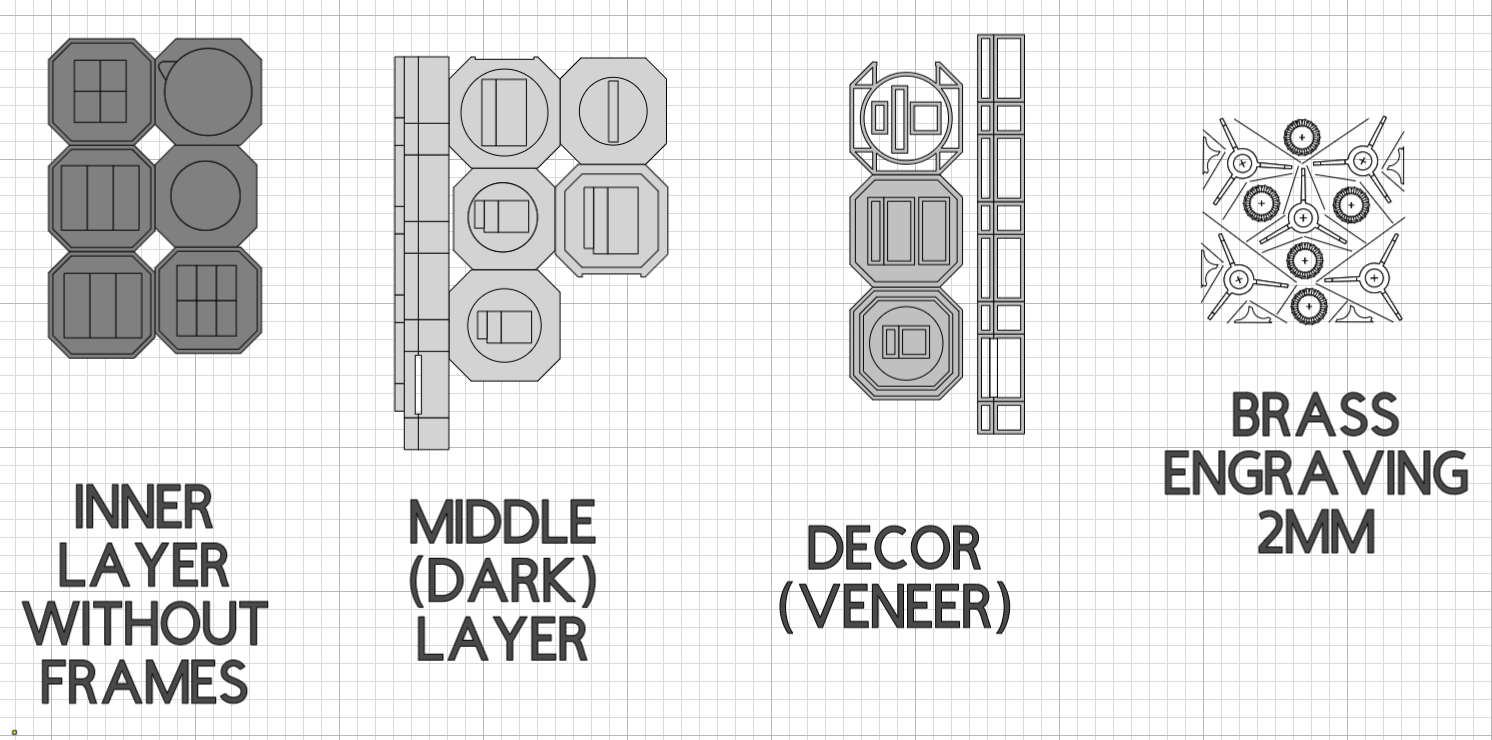
More than 70 parts cut on the Cricut Maker The current iteration is made from stained basswood pieces cut on a Cricut and glued together. The decoration layer uses natural wood veneer. Veneer still creates a good visual effect but is prone to delayering and warping. I will look into using a bone inlay or a brass sheet for the decoration layer for future iterations.
The hinge, latch and ring holder are from Amazon, yet customized:
- The hinge is cut to better fit the dimensions
- The latch is bent to allow it to lock automatically when lid is closed
- The latch receiver is replaced with a piece of brass rod
- The ring on the holder is replaced with a bigger one for better proportions
- All parts are aged in ammonia fumes for a few hours
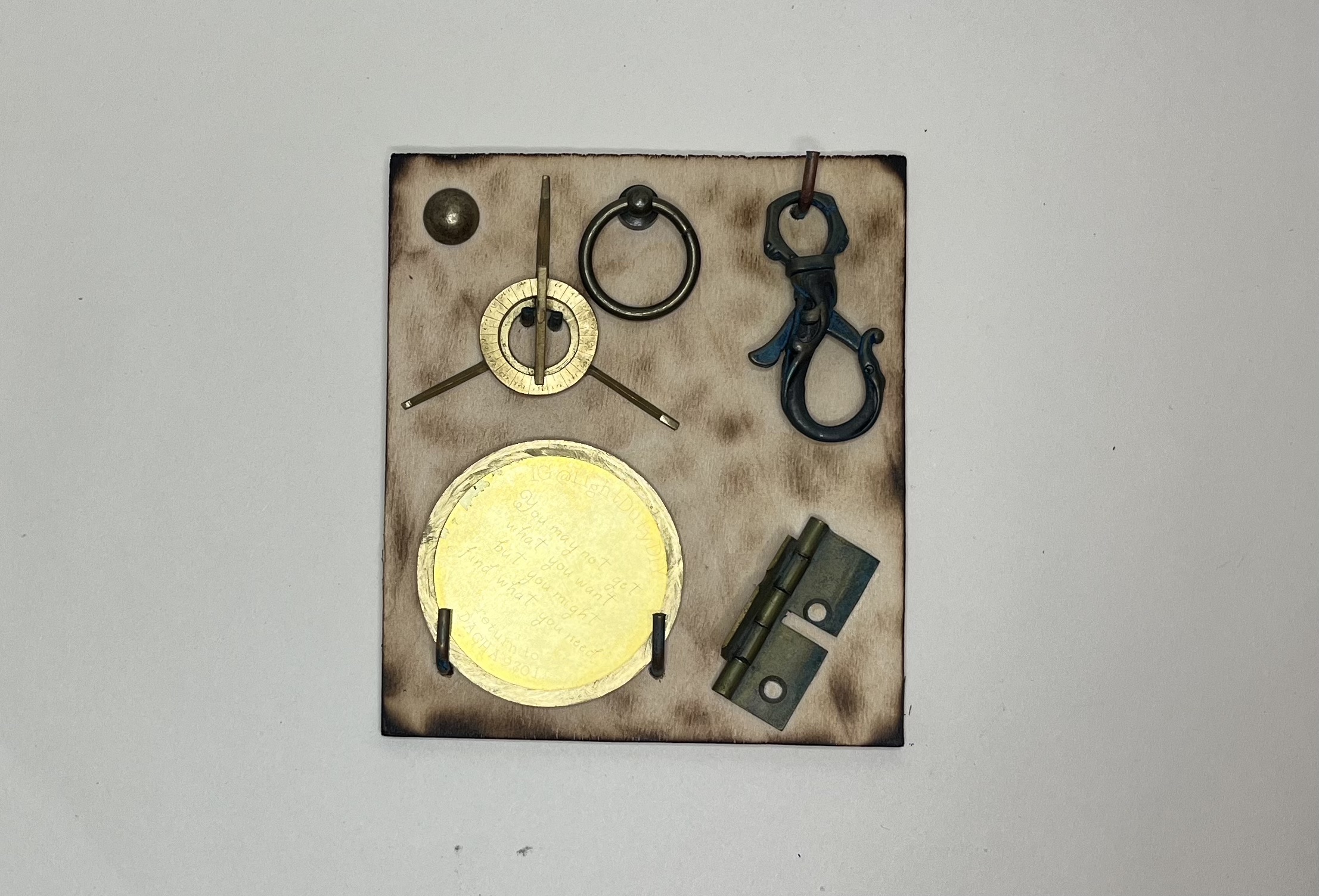
Brass parts on display 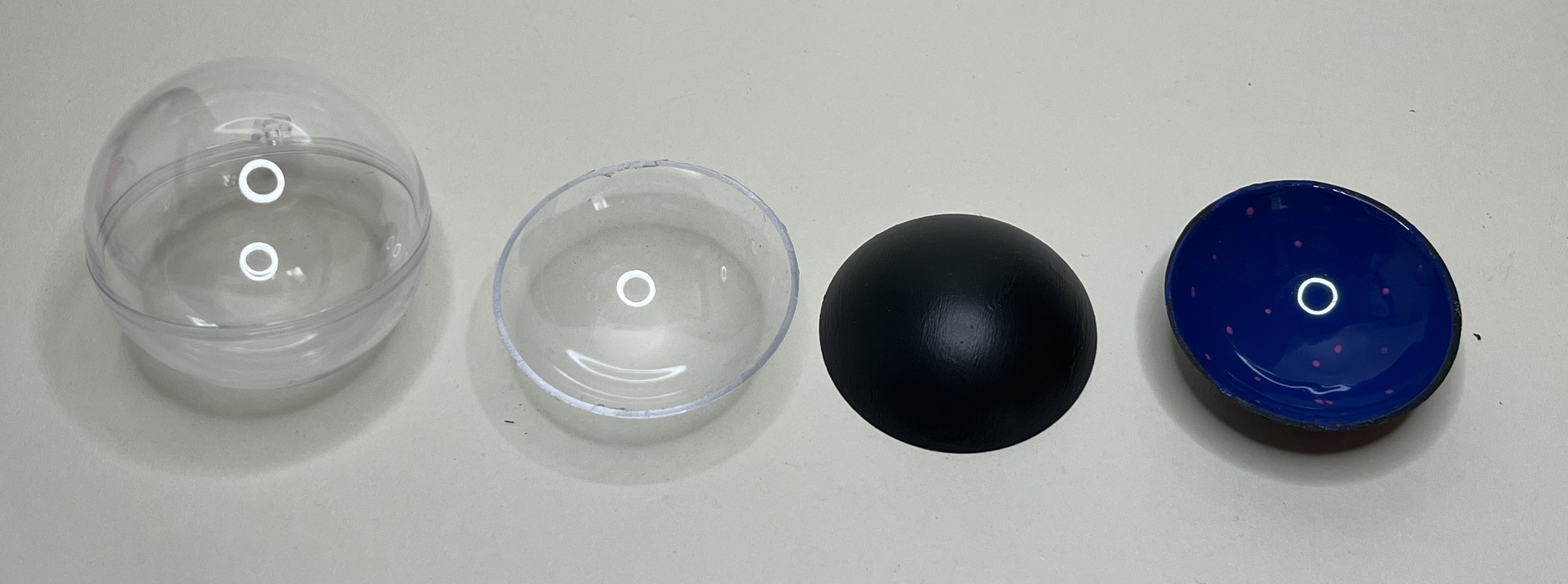
The “dome” on the lid is made from a 6 mm acrylic DIY Christmas decoration ball. The outer side is covered with black acrylic paint and a satin finish, and the inside is glossy enamel with a ‘star map’. 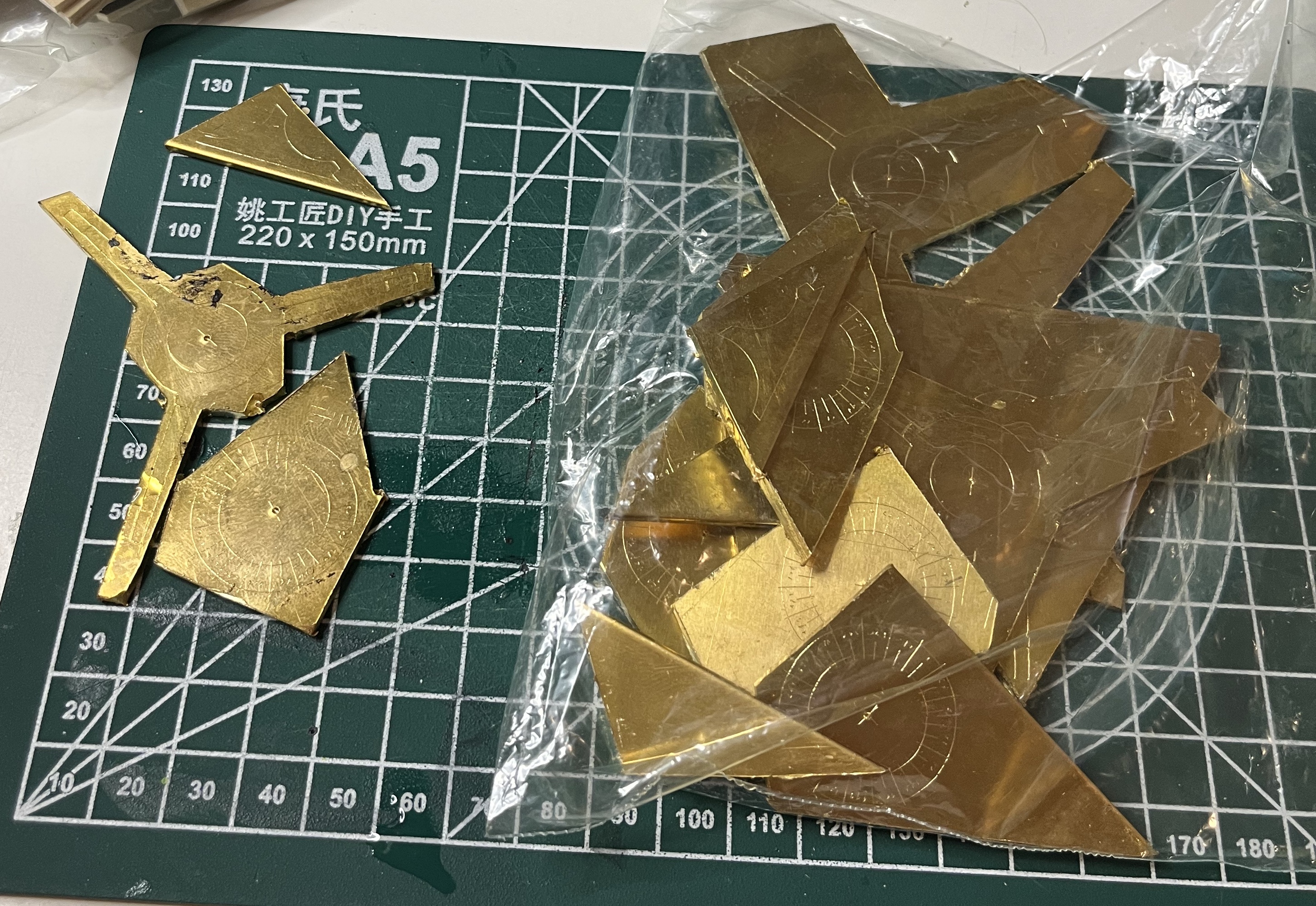
Inside the compass, there is a brass piece with a sundial. I engraved the contours onto a 2mm brass sheet and then used a grinder and a sander to cut pieces from the sheet. Then some soldering on the back side puts it all together, and a few hours in ammonia for the consistent look. The main dial is a multi-layer item:
- A small Lego gear that mounts on the mechanism
- ABS sheet gives it structure
- Glow in dark paper with a printed wind rose
- A brass hemisphere removed from a decorative furniture nail
All layers are glued with cyanoacrylate, then shaped evenly under the hot iron, and then cut with scissors

If fully charged, the glowing is very bright 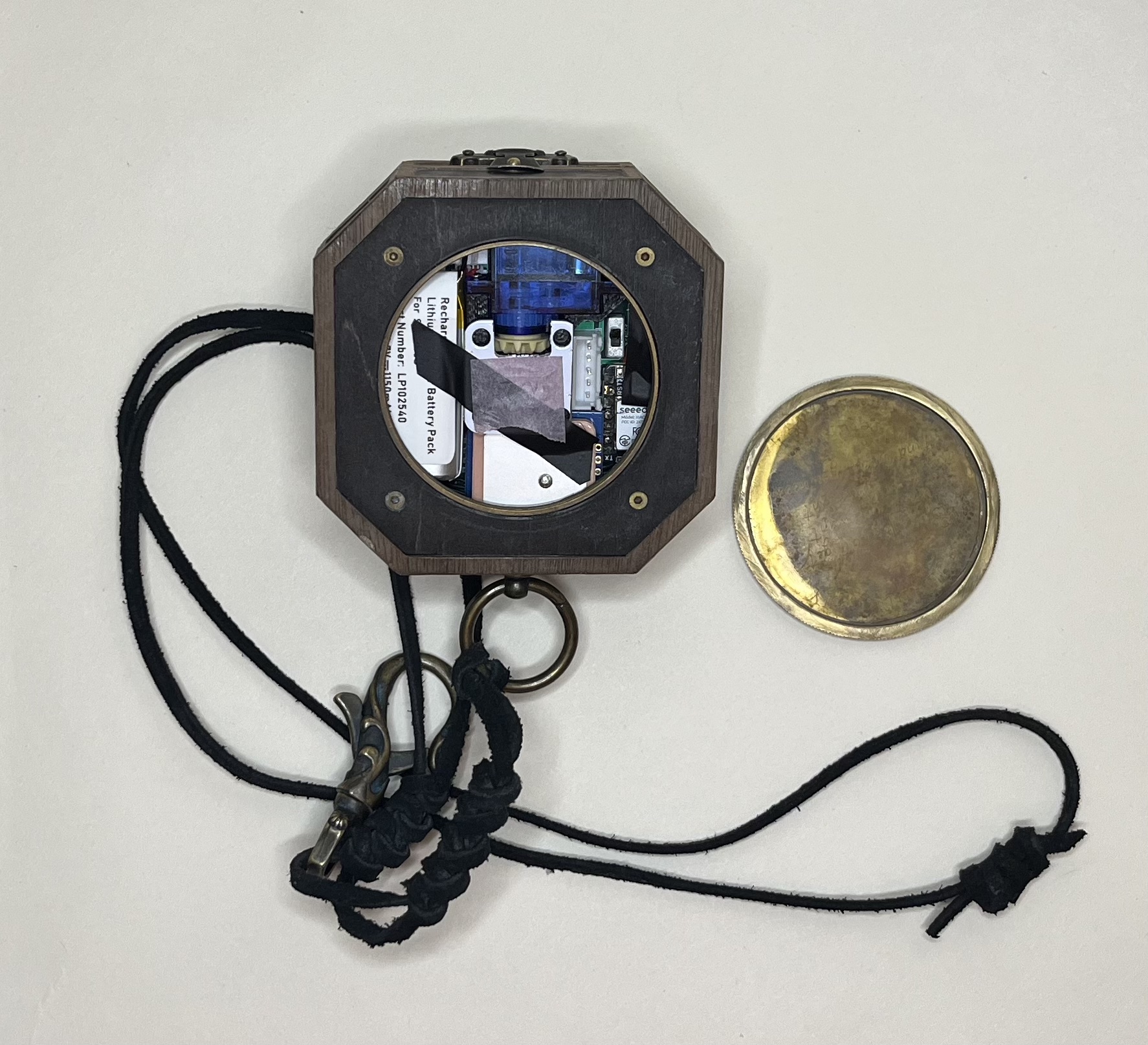
The bottom of the box is a removable lid fixed by four brass machine screws. In the center, it has an access window that can be unscrewed to access the on-off switch and charging/programming connector inside. When closed, the compass has no visible indication of electrical components to keep the magic working. In the future, I’ll try to redesign the bottom part to make it simpler - just need a better way to charge and control. Wireless charging, maybe? 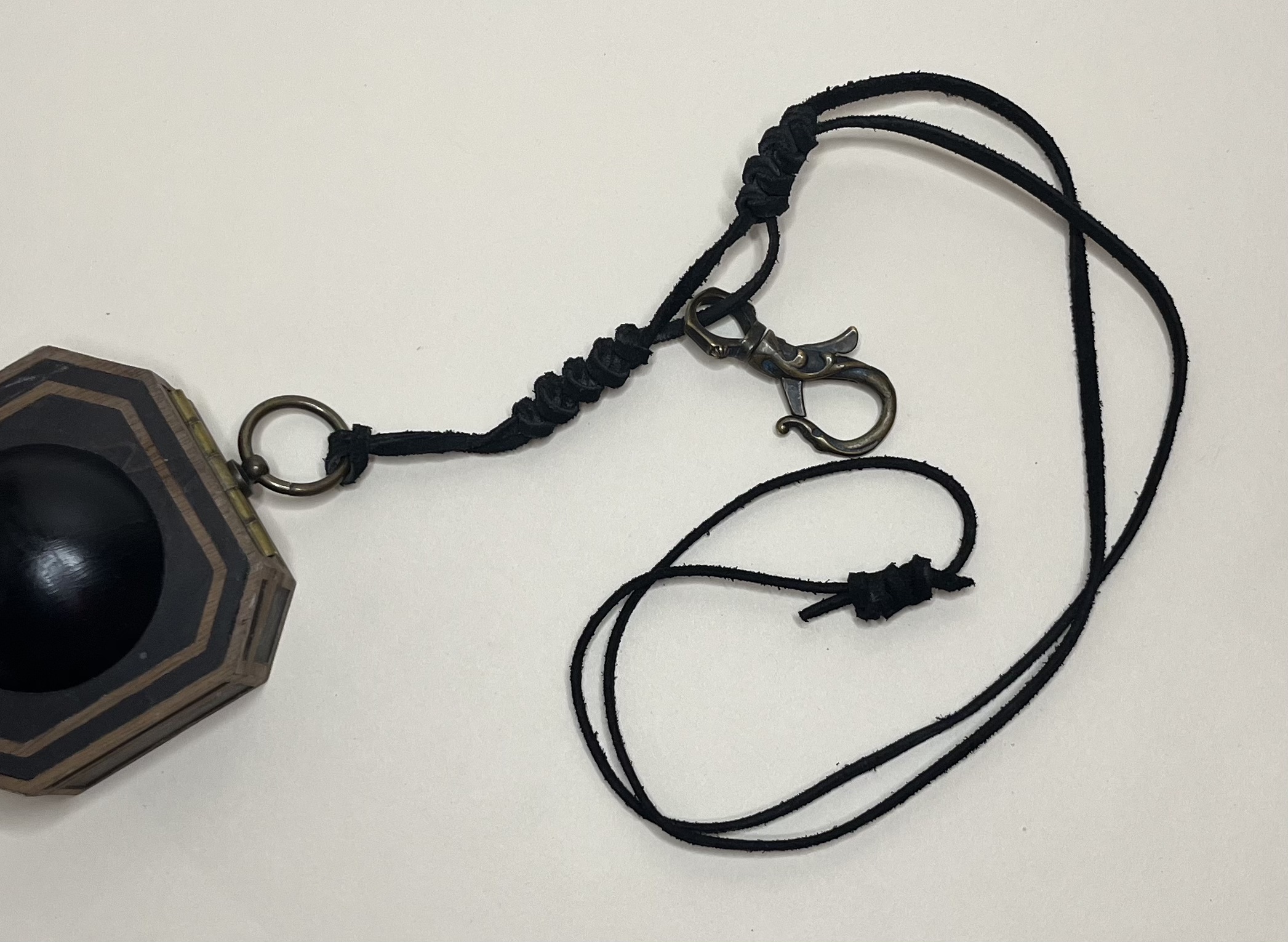
Finally, to complete the experience, I added a leather lace with some braiding, aged brass carabiner from Aliexpress, and fisherman's knot to close the loop. This allows comfortable wearing around the neck as well as on the belt. The Brain
Inside the compass, there is a printed circuit board with a few components:
- Controller
- Magnetometer to detect real direction to the north
- GPS module to understand the current position
- Servo motor to spin the dial
- Angular encoder to understand the precise dial position
- Battery
- UV led to charge the glow-in-the-dark dial
- Charging/programming port
- On/off switch
- A couple of power-controlling mosfet transistors
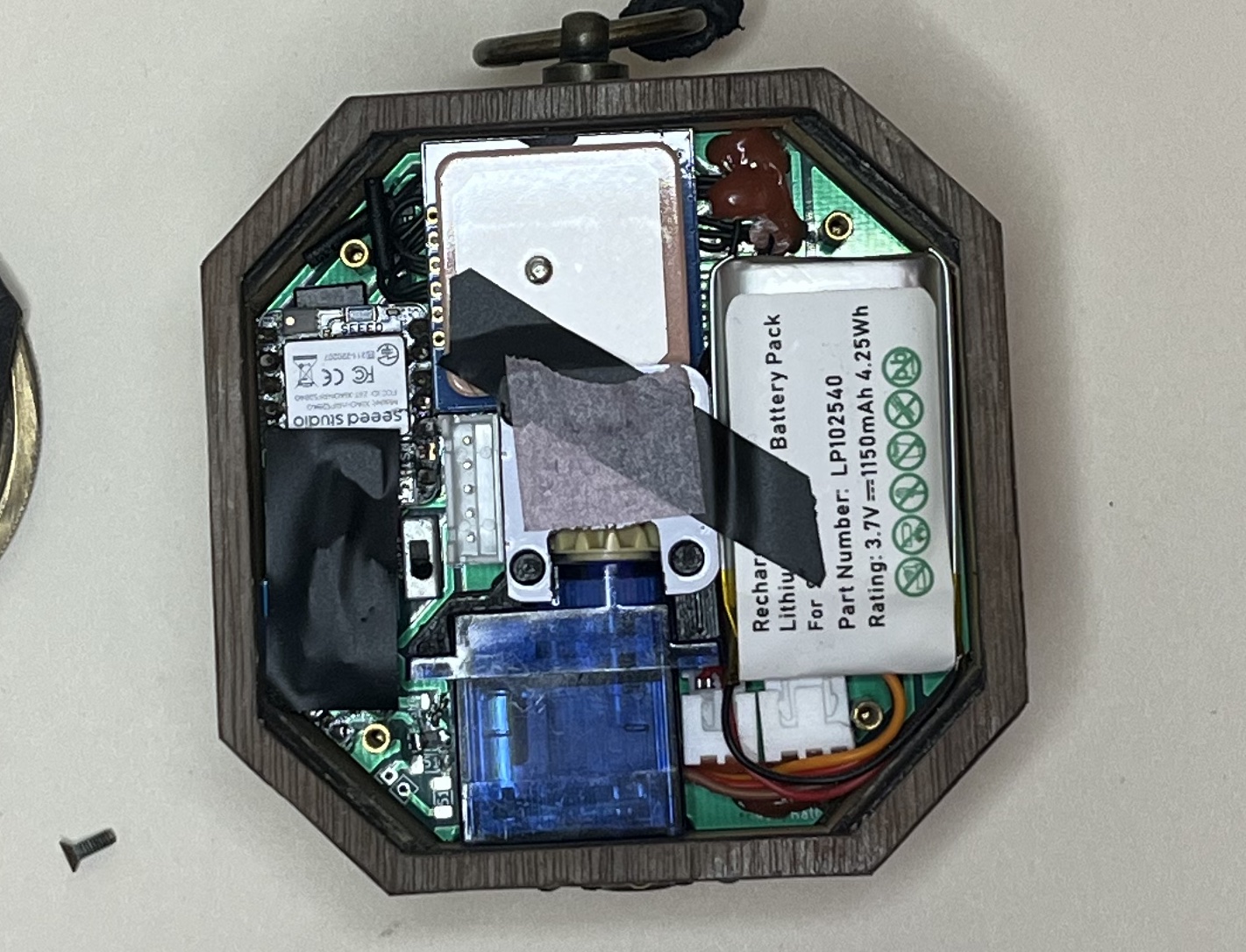
In the center is a custom 3D-printed mount that brings together a motor, circuit board, axles, gears, and angular encoder.
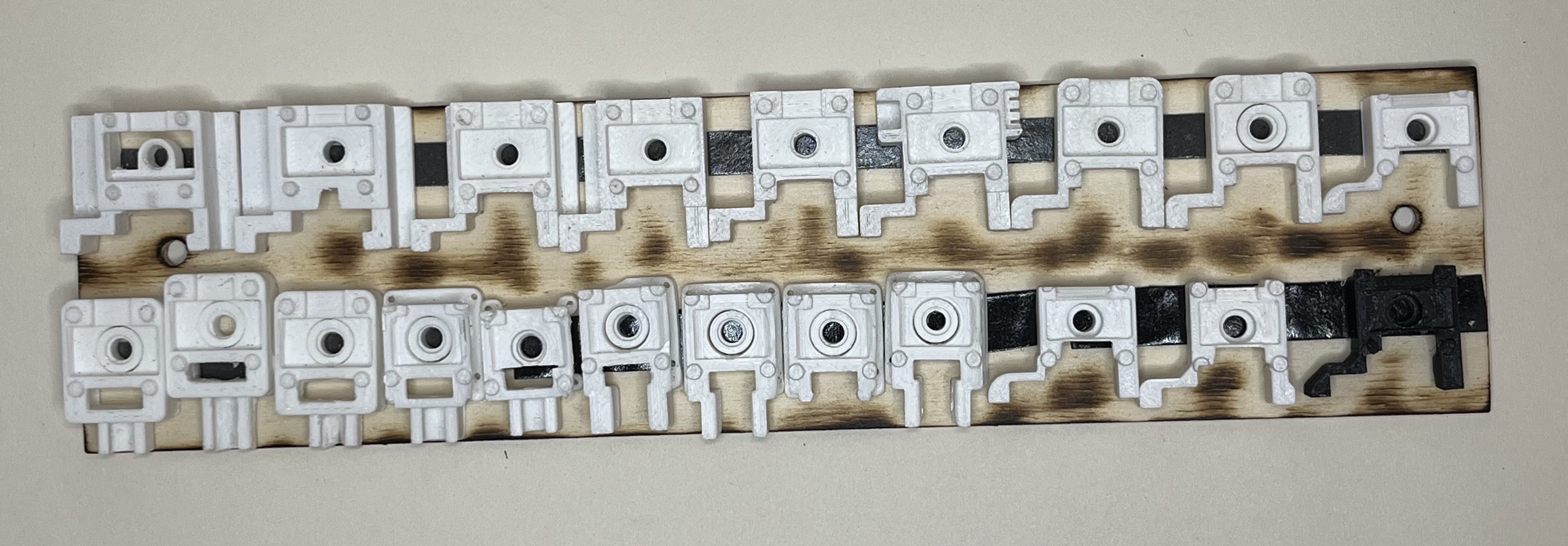
Different iterations on the mount design. Final version uses PETG to keep it operational in very hot weather. 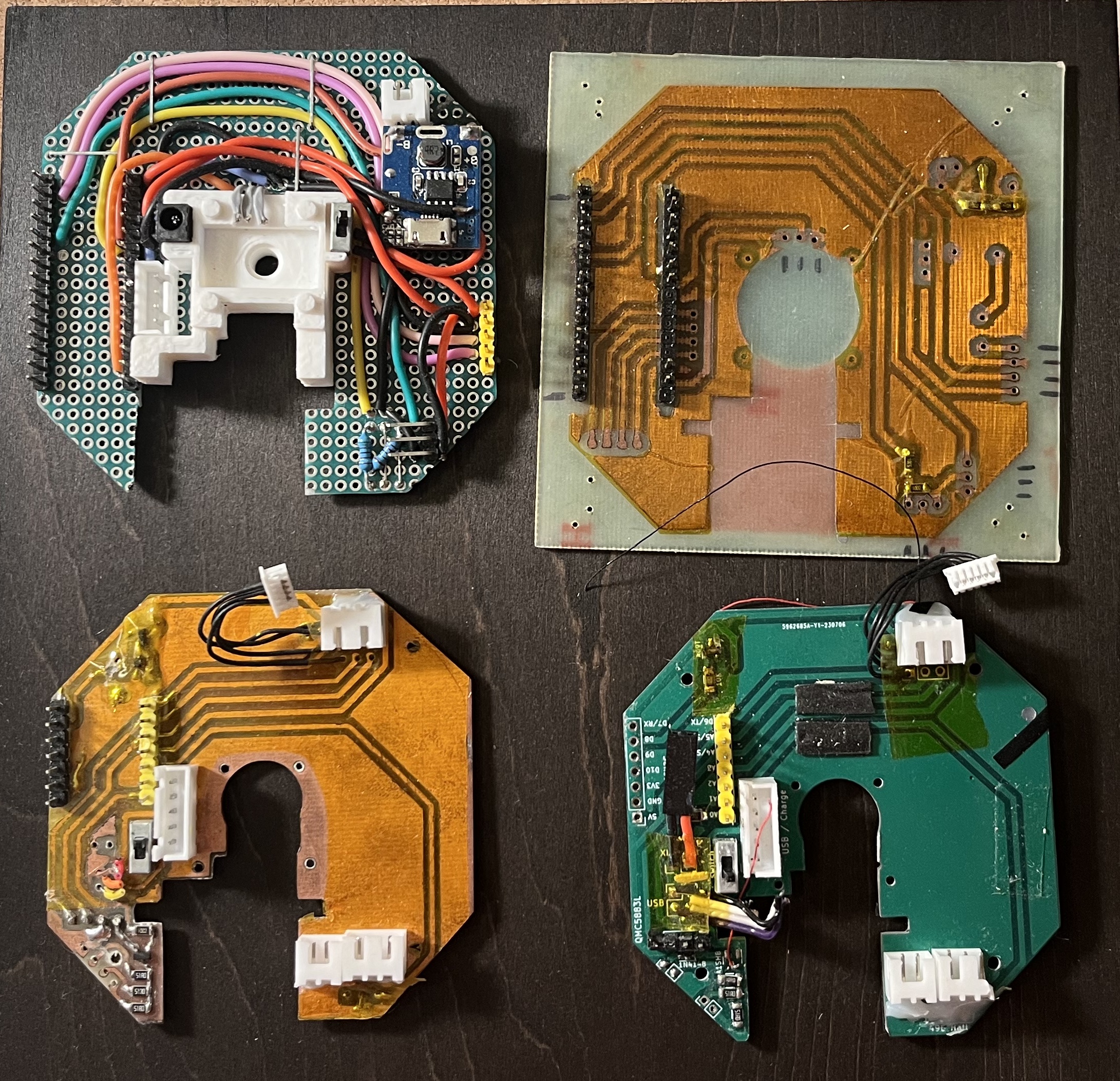
I went through two iterations of the board layout to achieve a compact size. I tried to use smaller motors too, but they were not very reliable. It would be nice to try to place more components directly on the PCB, but that would require another complete redesign. I will not dive deep into the software part of the compass. I will only mention that generative AI helped a lot with converting maps Google Maps into the compass data format, crowdsourcing helped with curating the destinations and working with off-the-shelve components of unknown origin was painful. Currently, the compass can remember visited locations, always chooses the closest new point, and supports ‘working hours’ for destinations.
The Future
I have a few ideas on how to evolve the compass.
It is trivial to implement “quests” (sequences of destinations) and map updates over Bluetooth. Bluetooth can also add interactivity: the compass becomes a beacon, and surrounding objects can detect it and become alive. That would work similarly to how magic wands work in the Harry Potter section of Universal Studio theme parks.
From the assembly perspective, I want to use a CNC mill instead of Cricut for most parts to make the assembly less time-consuming. This will also lead to redesigning the bottom part.
Finally, as I mentioned, I want to explore more interactivity: allow compasses to point to each other, or track moving objects. Thinking about Ultra Wide Bandwith protocol, but I’m not sure if I have room for another sizeable microchip. Though Apple managed to add it inside Airtag, so I’m still exploring.
An easier path to interactivity is adding a remote control: something like a Gear VR controller can be hidden in the pocket and use Bluetooth to prank people: make the compass point to a specific person or a bottle of rum!
Conclusion
I assembled three units of the current generation, but want to make a handful more to share with people on Burning Man and maybe regional BM events. Look out for the least conspicuous pirate ;)
I think it has great potential for quests, renaissance fairs, and pirate festivals. It’s also a great conversation starter when used as a prop for a cosplay costume.
Let me know what you think about this project, and reach out if you want to collaborate or have an idea how to evolve it into a new magical experience!
Links and Credits
- Some reels about the process in my Instagram: @LightDutyMagic
- Youtube: https://www.youtube.com/@LightDuty
- A couple of stories about working on this compass: The compass that doesn’t point North. Obsessing over user experience for Burning Man.
- An overview for Replica Prop Forum: Interactive Jack Sparrow Compass
- Great source for inspiration if you are working on your compass: The Jack Sparrow Costuming
- I’m very grateful to this person for figuring out the dimensions: Blueprinting Example - Jack Sparrow Compass Even though I didn’t follow them exactly, the original PDF layout helped me start the project.